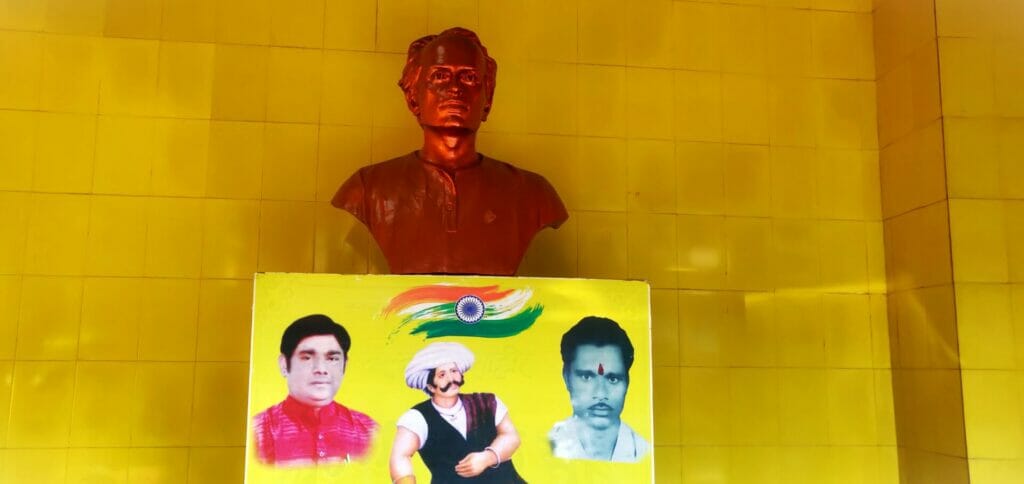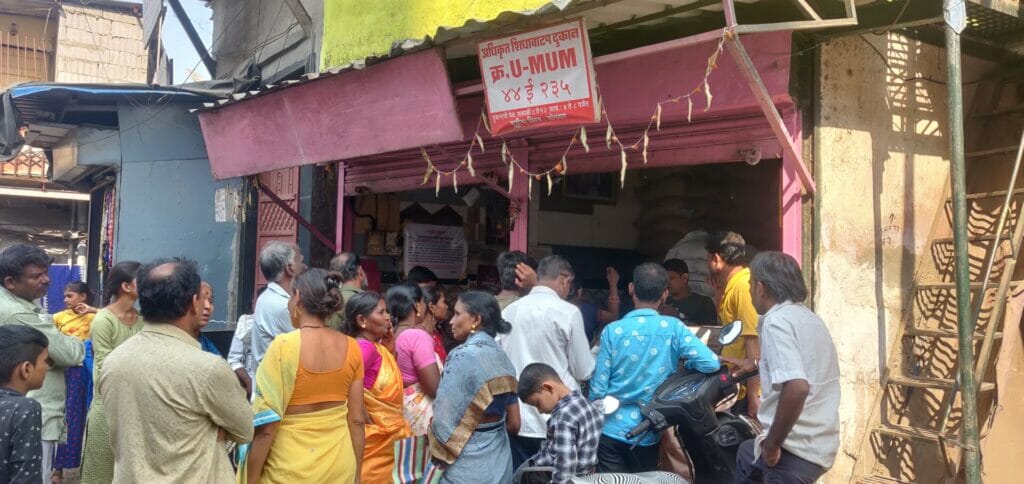The Brihanmumbai Municipal Corporation (BMC) will be spending over Rs 10 crore on the beautification of the M-east ward in the first phase. The ward authorities also plan to construct a clock tower at Indian Oil Nagar in the second phase of beautification. However, residents in the area believe the money could be used more efficiently.
33-year-old Kailash Aran, who works as a driver and resides in the slums of Annabhau Sathe Nagar, contends BMC needs to focus on keeping the area clean and ensuring the ward remains mosquito-free instead of such beautification projects that don’t do much for the residents. “Make more public gardens so that children don’t play on busy roads,” he says.
Three phases of ‘beautifying’ M-east ward
Mahendra Ubale, Assistant Municipal Commissioner of M-east ward, says, “There are 21 works to be done in total, this includes some work on the footpath beautification, painting works and lighting of places etc. The clock tower is in the second phase, the estimated cost has not been finalised for it.”
A viewing gallery, planned at the jetty side in Trombay, will reportedly cost Rs 50 crore. Ubale says the cost for that has not been finalised. The sketches of the location where the first phase would be implemented can be accessed here.
The initiative falls under BMC’s larger Mumbai Beautification Plan, pushed by the Eknath Shinde government in September. The MBP is a tweaked alternative to the tactical urbanisation project of the earlier Maha Vikas Aghadi government, which was spearheaded by the then Minister of Tourism and Environment Aaditya Thackeray.
Tactical urbanism aimed at using unutilised urban spaces for a variety of activities—like there were plans to turn the space under flyovers into public spaces and public bike-sharing for locals and tourists. The MBP focuses more on beautifying the city’s roads, footpaths, skywalks, bridges and promenades in the next three months. BMC has allotted Rs 1,700 crore for this project.
Read more: Safe school zones in Mumbai are possible, shows a new initiative
Large number of marginalised communities in M-east ward
Dalits and Muslims make up a large slum population in M-east ward’s Mankhurd. Many live in close proximity to the Deonar dumping ground and are exposed to a high degree of pollutants on a daily basis. One such resident is Santosh Thorat, who became a prominent force of resistance against slum demolitions in 2004. Living in the slums of Annabhau Sathe Nagar, the 52-year-old has taken it upon himself to help the people in the area in whatever capacity he can. He does odd jobs to sustain himself.
Earlier last week, inside Ekta Mitra Mandal Chawl, where his tiny home is situated, he was seen standing in the narrow lane looking after the repair works of the electricity meter boxes. “Someone had set them on fire late in the night (Nov 1st). We doused it using sand but you can still smell Kerosene here. This has happened for the first time, it is hard to say who would do something like this,” says Thorat.

Thorat’s daily life is packed with people coming to him for help on various issues. “Tata institute had done a survey on this area and said in their report that the quality of life that people lead in Mankhurd is worse than that of the people in Sub-Saharan Africa,” he says.
The ward also ranks low on the environmental front. According to the Climate & Air Pollution Risks and Vulnerability Assessment Report (March 2022), the M-east ward is one of the most deprived areas in Mumbai and also the most polluted one as a number of industries are situated there along with an open landfill.
The report, created by research think tanks in collaboration with BMC, states that M-east ranks lowest amongst all the 24 wards in terms of access to toilet facilities inside the households as well as access to treated tap water. The civic body’s 2011 census suggests that M-east has the highest illiterate population when compared to other wards.
What people want
“We are still falling back in education levels, even though they are improving a little gradually. Many are still addicted to various substances here,” says Thorat. Out of 70 plus BMC-run schools in the M-east ward, most are till upper primary and only a few offer secondary-level education. In 2015-16, these schools catered to a little over 50,000 students. Out of the total 25,885 screened that year, 15,038 were found to be malnourished.
He says they are not against beautification. “But before that at least ensure that people who stay here are in a better condition. We still need good water facilities in the area. I know a few people who died here in Sathe Nagar due to Typhoid a few months ago.“ He explained that water pipes in the area burst frequently and many end up consuming contaminated water.

Instead, he says, all the waste from Mumbai is dumped at Deonar and all the biomedical waste is burned in Govandi. What Thorat is referring to is BMC’s biomedical waste incinerator in the area, operated by SMS Envoclean Pvt Ltd, which some allege is directly responsible for a rising number of tuberculosis cases in the area. This also came up in conversation with Aran, who says, “There is that SMS factory that needs to get out of here first which is impacting the health of the residents.”
‘Beautification not a problem as much as exclusion is’
Tata Institute of Social Science’s Dean and Professor in the School of Habitat Studies, Dr Amita Bhide, who led extensive surveys in the M-east ward in 2011, believes aesthetics is as much a right of the deprived and it is just as important as providing other resources to the people.
However, she is careful to make a distinction between this idea and the current project. “People need to see themselves in these projects,” she says. “These projects need to celebrate the local traditions and the subaltern traditions. This could only be possible when one spends a little bit of time in planning it and consulting local communities.”
Such projects cannot create more environmental or other problems that pose a risk to the livelihood of communities, she says. “With regards to the viewing gallery in Trombay, is that going to create a livelihood for the fisherfolk or will it harm their access to the sea? There should have been more consultations with local fisherfolk communities. Their tradition is getting lost. There were 12 vibrant fishing communities and gaothans in the area but some of them don’t even exist now. Beautification project could have been an opportunity to commemorate some of these traditions.”